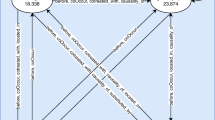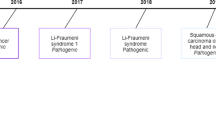Abstract
The need to represent and manage time is implicit in several reasoning processes in medicine. However, this is predominantly obvious in the field of many neurodegenerative disorders, which are characterized by insidious onsets, progressive courses and variable combinations of clinical manifestations in each patient. Therefore, the availability of tools providing high level descriptions of the evolution of phenotype manifestations from patient data is crucial to promote early disease recognition and optimize the diagnostic process. Although many case reports published in the literature do not provide exhaustive temporal information except only key time references, such as disease onset, diagnosis or monitoring time, automatically comparing cases described by temporal clinical manifestation sequences can provide valuable knowledge about the data evolution. In this paper, we demonstrate the usefulness of representing patient case reports of a neurodegenerative disorder as a set of temporal clinical manifestations semantically annotated with a domain phenotype ontology and registered with a time-stamped value. Novel techniques are presented to query and match sets of different manifestation sequences from multiple patient cases, with the aim of automatically inferring phenotype evolution patterns of generic patients for clinical studies. The method was applied to 25 patient report cases from a Spanish study of the domain of cerebrotendinous xanthomatosis. Five evolution patterns were automatically generated to analyze the patient data. The results were evaluated against 49 relevant conclusions drawn from the study, with a precision of 93 % and a recall of 70 %.







Similar content being viewed by others
References
Shahar, Y., and Musen, M., Knowledge-based temporal abstraction in clinical domains. Artif. Intell. Med. 8(3):267–298, 1996.
Dechter, R., Meiri, I., and Pearl, J., Temporal constraint networks. Artif. Intell. 49:61–95, 1991.
Pustejovsky, J., Castaño, J., Ingria, R., Saurí, R., Gaizauskas, R., Setzer, A., Katz, G. TimeML: robust specification of event and temporal expressions in text. Proc of the Fifth International Workshop on Computational Semantics. http://www.timeml.org/site/publications/timeMLpubs/IWCS-v4.pdf. Accessed 10 June 2012, 2003.
Marín, R., Cárdenas, M. A., Balsa, M., and Sánchez, J. L., Obtaining solutions in fuzzy constraint networks. Int. J. Approx. Reason. 16(3–4):261–288, 1996.
McGuinness, D., and van Harmelen, F. OWL web ontology language overview. http://www.w3.org/TR/owl-features/. Accessed 10 June 2012, 2004
Hobbs, J. R., and Pan, F. Time ontology in OWL. http://www.w3.org/TR/owl-time/. Accessed 10 June 2012, 2006.
O’Connor, M. J., and Das, A. K., A method for representing and querying temporal information in OWL. In: Fred, A., Filipe, J., and Gamboa, H. (Eds.), Biomedical engineering systems and technologies, vol. 127. Springer, Berlin, pp. 97–110, 2011.
Tao, C., Wei, W. Q., Solbrig, H. R., Savova, G., Chute, C. G. CNTRO: a semantic web ontology for temporal relation inferencing in clinical narratives. Proc of the AMIA Annual Symposium pp 787–791. http://www.ncbi.nlm.nih.gov/pmc/articles/PMC3041418/. Accessed 10 June 2012, 2010.
Zhou, L., Parsons, S., and Hripcsak, G., The evaluation of a temporal reasoning system in processing clinical discharge summaries. J. Am. Med. Inform. Assoc. 15:99e106, 2008.
Mannila, H., and Moen, P., Similarity between event types in sequences. In: Mohania, M., and Tjoa, A. M. (Eds.), Proc of the first intl. conf. on data warehousing and knowledge discovery. Springer, London, pp. 271–280, 1999.
Juarez, J. M., Guil, F., Palma, J., and Marin, R., Temporal similarity by measuring possibilistic uncertainty in CBR. Fuzzy Set Syst. 160(2):214–230, 2009.
Federico, A., and Dotti, M. T., Cerebrotendinous xanthomatosis: clinical manifestations, diagnostic criteria, pathogenesis, and therapy. J. Child Neurol. 18:633–638, 2003.
Shoham, Y., Temporal logics in AI: semantical and ontological considerations. Artif. Intell. 33:89–104, 1987.
Seidenberg, J., and Rector, A. Web ontology segmentation: analysis, classification and use. In: Proc of the 15th International Conference on World. New York: ACM, pp 23–26, 2006.
Robinson, P. N., and Mundlos, S., The human phenotype ontology. Clin. Genet. 77:525–534, 2010.
Knublauch, H., Fergerson, R., Noy, N., and Musen, M., The Protégé OWL plugin: an open development environment for semantic web applications. Lect. Notes Comput. Sci. 3298:229–243, 2004.
O’Connor, M., and Das, A. SQWRL: a Query Language for OWL. In: Proc of the Fifth International Workshop on OWL: experiences and directions. http://bmir.stanford.edu/file_asset/index.php/1723/BMIR-2009-1395.pdf Accessed 10 June 2012, 2009.
Pilo, B. Xantomatosis Cerebrotendinosa en España: mutaciones, aspectos clínicos y terapéuticos. Dissertation, University of Alcalá de Henares, 2009.
Pilo, B., Jimenez-Escrig, A., Lorenzo, J. R., Pardo, J., Arias, M., Ares-Luque, A., Duarte, J., Muñiz-Pérez, S., and Sobrido, M. J., Cerebrotendinous xanthomatosis in Spain: clinical, prognostic, and genetic survey. Eur. J. Neurol. 18(10):1203–1211, 2011.
Juarez, J. M., Campos, M., Palma, J., and Marin, R., TCare: temporal case retrieval system. Expert. Syst. 22(4):324–338, 2011.
Drummond, N., and Shearer, R. The open world assumption. http://www.cs.man.ac.uk/~drummond/presentations/OWA.pdf. Accessed 10 June 2012, 2006.
Dojat, M., Ramaux, N., and Fontaine, D., Scenario recognition for temporal reasoning in medical domains. Artif. Intell. Med. 14(1–2):139–155, 1998.
Acknowledgments
The work presented in this paper has been developed in the funded national project Gestión de Terminologías Médicas para Arquetipos (TIN2009-14159-C05-05) by the Ministerio de Educación y Ciencia.
Conflict of interest
The authors declare that they have no conflict of interest.
Author information
Authors and Affiliations
Corresponding author
Appendix A
Appendix A
Processing algorithm to generate a set of time points from patient cases.
Function obtainTP (SC, keyevents) returns TP

Online resources
The online resources and all information relevant to the paper is provided in following link: http://www.usc.es/keam/TempCTX/, which contains
Online resources 1 The graphical representation of the 5 evolution patterns automatically generated by the system.
Online resources 2 The 5 evolution patterns in detailed format.
Several diagrams showing the main hierarchies of the CTX phenotype management ontology.
- A description of the implemented application.
Implementation note
We used Protégé-OWL 3.4.8, Java 1.7.0, Pellet 3.4.8, the collection of Java APIs provided by the SWRL Tab, and Jess.
Rights and permissions
About this article
Cite this article
Taboada, M., Álvarez, V., Martínez, D. et al. Summarizing Phenotype Evolution Patterns from Report Cases. J Med Syst 36 (Suppl 1), 25–36 (2012). https://doi.org/10.1007/s10916-012-9887-2
Received:
Accepted:
Published:
Issue Date:
DOI: https://doi.org/10.1007/s10916-012-9887-2




